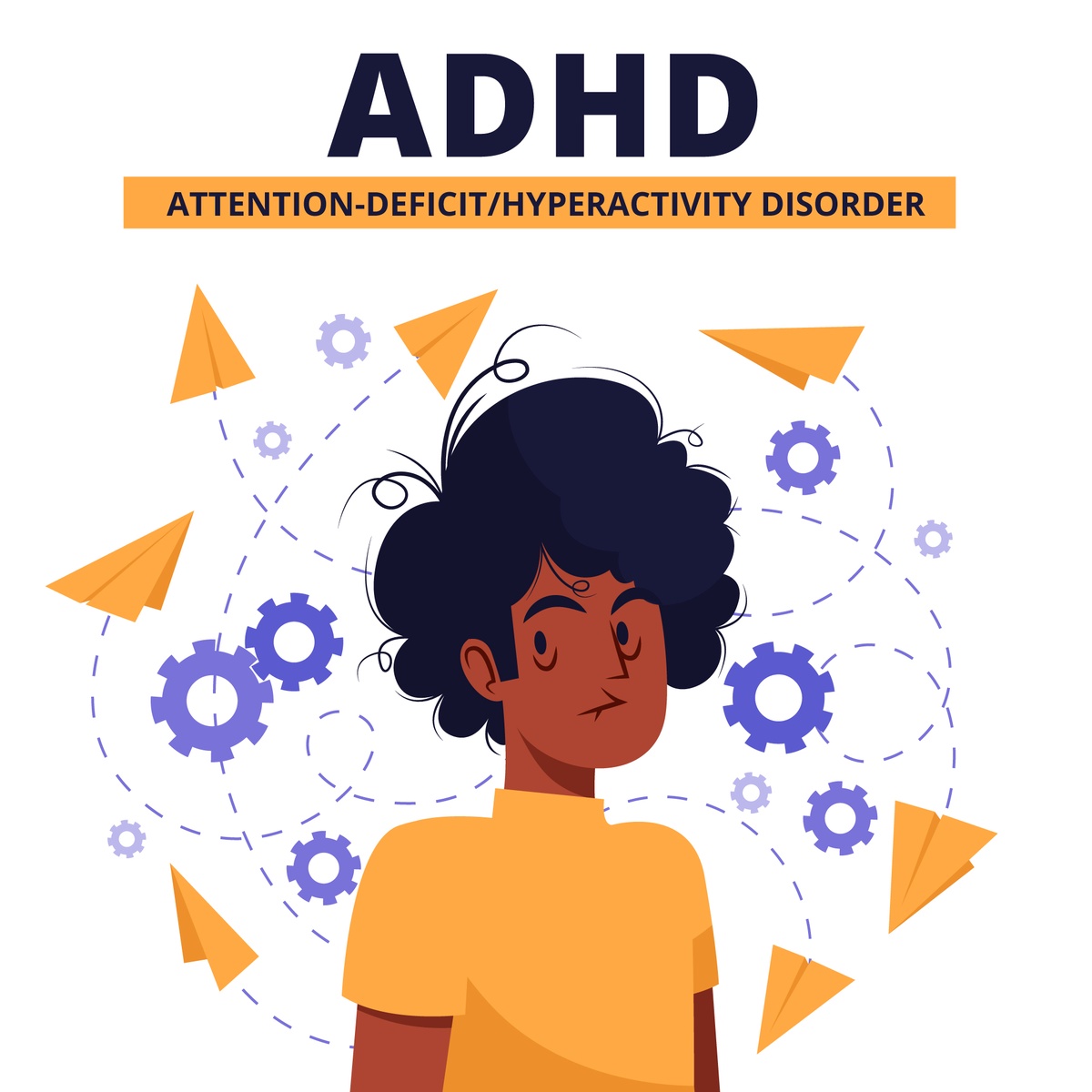Attention Deficit Hyperactivity Disorder (ADHD) is a neurodevelopmental disorder that affects a significant number of children worldwide. Understanding the symptoms, causes, and treatment options is crucial for parents, educators, and healthcare professionals to provide effective support and interventions.
What Is ADHD in Children?
ADHD is characterized by persistent patterns of inattention, hyperactivity, and impulsivity that interfere with a child's daily functioning and development. It often becomes noticeable in early childhood, with symptoms continuing into adolescence and adulthood.
What Are the Symptoms of ADHD in Children
The symptoms of ADHD can be categorized into two main types: Inattention and Hyperactivity-Impulsivity.
Inattention symptoms include difficulty sustaining attention in tasks or play, frequent careless mistakes, forgetfulness in daily activities, and easily becoming distracted.
Hyperactivity-impulsivity symptoms involve excessive fidgeting, difficulty remaining seated, impulsively interrupting others, and struggling to wait their turn.
Not every child with Attention Deficit Hyperactivity Disorder (ADHD) exhibits the same symptoms, and the severity can vary. It's essential to recognize that these behaviors should persist for at least six months and be inconsistent with the child's developmental level.
Types of ADHD
There are three subtypes of ADHD based on the predominant symptoms:
- Predominantly Inattentive Presentation: Children with this subtype exhibit primarily inattentive symptoms, struggling with sustained attention, organization, and completing tasks.
- Predominantly Hyperactive-Impulsive Presentation: This subtype is characterized by hyperactivity and impulsivity without significant inattention.
- Combined Presentation: Children with this subtype display a combination of inattention, hyperactivity, and impulsivity.
Identifying the specific subtype is crucial for tailoring interventions to address the child's unique challenges.
What are the Causes of ADHD in Children
The exact cause of ADHD is not fully understood, but a combination of genetic, environmental, and neurological factors likely contributes. Genetics play a significant role, as ADHD often runs in families. Exposure to certain prenatal and perinatal risk factors, such as maternal smoking, premature birth, and low birth weight, may also increase the likelihood of developing ADHD.
Neurologically, differences in brain structure and function, particularly in regions associated with attention and impulse control, have been observed in individuals with ADHD. Imbalances in neurotransmitters, such as dopamine and norepinephrine, also play a role in the disorder.
Risk Factors of ADHD in Children
Several factors may increase the risk of a child developing ADHD:
- Genetics: A family history of ADHD or related disorders increases the likelihood of a child developing the condition.
- Prenatal and Perinatal Factors: Exposure to certain prenatal factors, such as smoking and alcohol use during pregnancy, as well as premature birth, may contribute to the risk of ADHD.
- Brain Injury or Dysfunction: Traumatic brain injuries or other neurological conditions may increase the risk of ADHD.
- Environmental Factors: Lead exposure and other environmental toxins may be associated with an increased risk of ADHD.
- Low Birth Weight: Babies with low birth weight may be at a higher risk of developing ADHD.
Understanding these risk factors can help identify children who may be more susceptible to ADHD and allow for early intervention and support.
Treatment of Childhood ADHD
Effective Treatment for Childhood ADHD typically involves a multimodal approach, combining behavioral interventions, psychoeducation, and, in some cases, medication.
- Behavioral Therapy: Behavioral interventions aim to modify specific behaviors associated with ADHD. This can include implementing reward systems, creating structured routines, and teaching organizational skills.
- Psychoeducation: Educating parents, teachers, and the child about ADHD is essential for creating a supportive environment. Understanding the challenges the child faces and learning effective strategies helps manage symptoms.
- Medication: In some cases, medication may be recommended, particularly when ADHD significantly impairs the child's daily functioning. Stimulant medications, such as methylphenidate and amphetamine-based drugs, are commonly prescribed and have been shown to be effective in managing symptoms.
- Parental Training: Teaching parents effective parenting strategies can enhance their ability to support a child with ADHD. This may include implementing consistent discipline, setting realistic expectations, and providing positive reinforcement.
- School Support: Collaborating with teachers and school staff to create an ADHD-friendly learning environment can significantly benefit the child. This may involve implementing classroom accommodations, such as preferential seating or extended time on tasks.
Complications of ADHD in Children
Untreated or poorly managed ADHD can lead to various complications, impacting the child's academic, social, and emotional well-being. Common complications include:
- Academic Difficulties: Children with ADHD may struggle with academic tasks, leading to lower academic performance and potential learning disabilities.
- Behavioral Issues: Impulsivity and hyperactivity can contribute to behavioral issues, including conflicts with peers and authority figures.
- Low Self-Esteem: Persistent challenges in daily activities may negatively impact a child's self-esteem and self-worth.
- Social Isolation: Difficulties in social interactions can lead to social isolation and feelings of loneliness.
- Emotional Distress: Untreated ADHD can contribute to emotional distress, including anxiety and depression.
What is the Difference Between ADD and ADHD?
The terms Attention Deficit Disorder (ADD) and ADHD are often used interchangeably, but there is a distinction. ADD is an outdated term that was previously used to describe individuals with attention difficulties but without the hyperactivity component. In the current diagnostic classification, ADHD encompasses both inattentive and hyperactive-impulsive presentations.
In essence, ADHD is the umbrella term, and it is categorized into different subtypes based on the predominant symptoms. The three subtypes include predominantly inattentive presentation, predominantly hyperactive-impulsive presentation, and combined presentation.
What are the Strategies for managing my Child’s ADHD at Home?
Managing a child's ADHD at home involves creating a supportive and structured environment. Here are some additional strategies:
- Establish Routines: Consistent routines provide structure and predictability, helping children with ADHD navigate daily tasks more effectively.
- Provide Clear Instructions: Clear and concise instructions, accompanied by visual aids if necessary, can enhance understanding and compliance.
- Use Positive Reinforcement: Rewarding positive behaviors encourages repetition and reinforces desired actions.
- Limit Distractions: Create a quiet and organized study space, minimizing distractions to facilitate better focus.
- Encourage Physical Activity: Regular physical activity helps channel excess energy and promotes overall well-being.
- Break Tasks into Manageable Steps: Breaking down tasks into smaller, more manageable steps makes them less overwhelming for children with ADHD.
- Promote Healthy Sleep Habits: Adequate sleep is crucial for cognitive function and emotional regulation. Establishing a consistent bedtime routine can help improve sleep quality.
- Encourage Hobbies and Interests: Supporting a child's interests and hobbies can boost self-esteem and provide a positive outlet for their energy.
Conclusion
Navigating ADHD in children requires a comprehensive and collaborative approach involving parents, educators, healthcare professionals, and the child themselves. Recognizing the symptoms, understanding the causes and risk factors, and implementing effective interventions can significantly improve the child's quality of life and future success. By creating a supportive and structured environment, children with ADHD can thrive and reach their full potential.
If you are also going through tough phase of your life, you can Book Online Session. We will be happy to serve you.


No comments yet